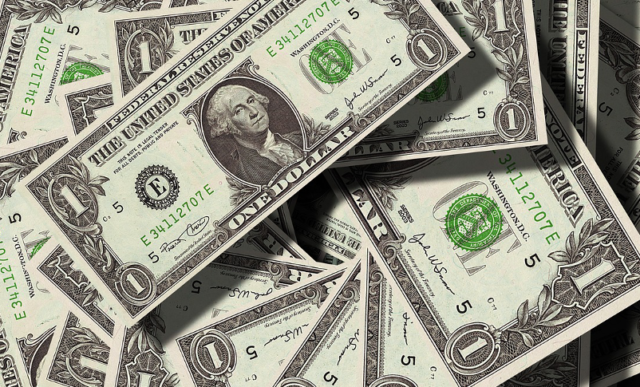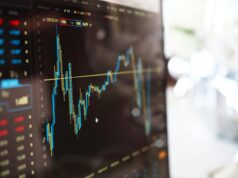The forex market, like a vast network of interconnected rivers, flows with the currency as its liquid essence, traversing the globe and shaping the financial landscape with its movements. Just as water sustains life, currency sustains the economy, and among the currencies, the US Dollar reigns supreme. Akin to pure mineral water, it is valued highly and found ubiquitously worldwide.
Foreign exchange, or currency trading, represents a bustling confluence where trillions of dollars cascade between countless participants each day. To navigate these waters, one must first acquaint themselves with the frequently traded currencies that shape its currents. Here, we dive into the major currencies and find out what they’ve been up to lately. READ FULL STORY
The US Dollar – Old Man River
The US Dollar, often referred to as the greenback, stands as the foremost force in the forex realm. It effortlessly dominates currency pairs with the other big fish in the pond, assuming the role of a primary intermediary in triangular currency transactions. Much like the universal presence of water itself, the greenback acts as an unofficial global reserve currency, a reservoir of wealth embraced by nearly every central bank and institutional investment entity on the planet.
Some nations choose to adopt the US Dollar as their official or unofficial currency, a practice known as dollarization. In other cases, the greenback enjoys wide acceptance alongside local currencies, functioning as an informal alternative form of payment. Its influence reverberates further still, as it serves as a benchmark or target rate for countries pegging their currencies to its value. Yet, this pegging practice sparks debate among economists and central bankers, mirroring the ebb and flow of a river’s course.
The US Dollar’s impact extends beyond borders, shaping the forex trading market by acting as the standard currency for many commodities, including crude oil and precious metals. The value of these commodities intertwines not only with the principles of supply and demand but also with the fluctuating tides of the US Dollar.
Inflation and changes in US interest rates create ripples that can sway prices, mirroring the intricate dance of water and nature. And lately, the water has been rippling. Continuing inflation is rocking the boat, and an election looms on the horizon. Expect stormy waters on the greenback’s shores until there is a capable captain at the helm.
The Euro – Territorial Waters
Following closely behind the US Dollar, the Euro claims the status of the second most traded currency. Unveiled to the world markets on January 1, 1999, this currency became the official tender for the majority of nations within the eurozone, gradually permeating the financial currents of the financial world. Much like a river nurtures the lands it touches, the euro provides stability by pegging other currencies within Europe and Africa to its value, mirroring the function of the US Dollar.
Resonating as a trusted currency, the euro bolsters liquidity in any currency pair it encounters, infusing the forex market with its abundant presence. Currency speculators navigate its currents as they gauge the overall health of the eurozone and its member nations. Political events within the eurozone surge like surging tributaries, driving substantial trading volumes, particularly concerning countries that have experienced drastic changes in local interest rates.
Italy, Greece, Spain, and Portugal emerge as noteworthy protagonists, making the euro the most ‘politicized’ currency within the forex realm. These political lines are being stretched by conflict in Ukraine, and the major rivers of EU wealth are pulling in opposite directions. Pay close attention to the relationship between France and Germany as Russia advances on the Danube.
The Japanese Yen – Riding the Rapid
Embodied as a symbol of Japan’s manufacturing and export-driven economy, the Japanese Yen asserts its prominence as the most traded currency among its Asian counterparts. Like a river that mirrors the strength of the land it traverses, the yen’s fate intertwines with Japan’s economic well-being.
Its influence extends further, serving as a barometer for the overall health of the Pan-Pacific region, encompassing nations such as South Korea, Singapore, and Thailand, whose currencies hold lesser sway within global forex currents. Moreover, the Yen gains recognition within forex circles for its role in the carry trade strategy; a quest for profit through interest rate differentials.
Japan is a big fish in a smaller pond. Though many feel that in Asia, China is the deep-lurking leviathan that will rise up and swallow the continent’s financial markets whole, Japan has set its course and is going full steam ahead. This shows some potential. They may be looking like a service economy that sits in the greenback’s pocket, but there is strength to Japan’s position.
The green waters of America churn constantly, with the largest and most affluent consumer market on this blue earth. Having easy access to US markets and products can only help Japan in the near future and strengthen the Yen. This is provided America gets itself together, and rights the ship.
Each currency possesses its own distinctive characteristics, influencing its underlying value and interactions with other currencies within the forex market. Understanding these factors becomes paramount for those seeking to navigate the dynamic currents of our financial future. These are the major currencies that shape the landscape of the forex market, much like the currents that carve out the course of a mighty river.








